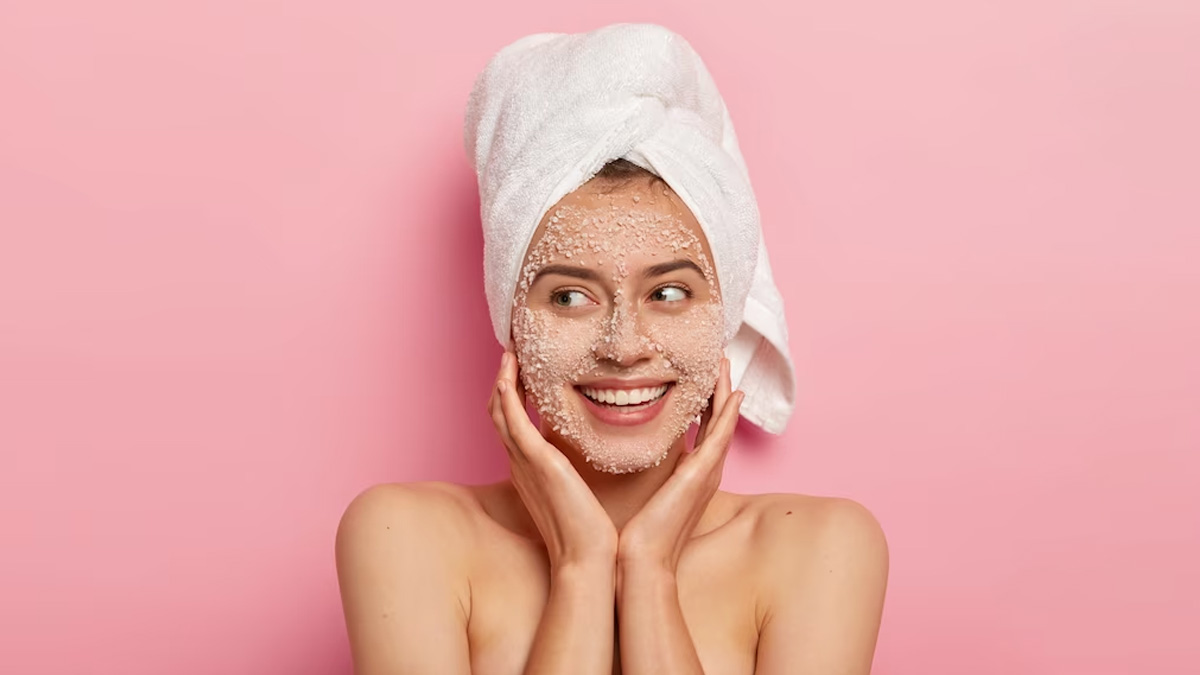

The skin care regimen is widely recognized for its ability to protect, nourish and improve the skin. Exfoliation is one of the steps that will help you have healthy skin. It helps remove dead skin cells, clear clogged pores and promote healthier, glowing skin. When used correctly, a peel can keep your skin fresh, radiant and youthful. However, improper exfoliation can cause irritation, dryness and even damage to the skin. We met with Dr. Geetika Srivastava, dermatologist and founder of Influennz Hair and Skin Clinic, lists the steps you need to follow to properly exfoliate your face.
Dr. Srivastava: “Our skin renewal takes about 30 to 60 days. This means that our skin is renewed within 60 days, even without any skin care. The skin renewal process is strengthened by the exfoliation process.

Determine your skin type
Before you start exfoliating, it's important to know your skin type. Knowing the individual needs of your skin will help you choose the right peeling method. When it comes to exfoliation at home, there are two main approaches: mechanical and chemical.
Dr. Srivastava added, "Skin type determines the frequency of exfoliation. Sensitive skin should generally avoid exfoliation. Oily skin is more flexible and can exfoliate three times a week. Dry skin should be tired and should exfoliate. You don't have to exfoliate once a week. It doesn't strip too much."
According to the American Academy of Dermatology, a mechanical exfoliation involves using tools such as brushes, sponges or scrubs to physically remove dead skin cells, while a chemical exfoliation relies on the use of ingredients such as alpha and beta hydroxy acids to exfoliated. dissolve gently. .

Choose the right peeling
Once you know your skin type, you can start choosing the right exfoliant for your skin.
- Scrubs: Body scrubs often come in the form of scrubs that contain tiny granules like sugar, salt, or microbeads. It can be effective at removing dead skin cells, but it can also be abrasive if used too much. Dr. Srivastava said, "So be careful when applying and avoid peels with large, irregular particles that can cause micro-breaks in the skin." When it comes to physical peeling, the smaller the particle size, the better the peel.
- Chemical peels: AHAs (glycolic and lactic acids) and BHAs (salicylic acid) are common options for chemical peels. AHAs are ideal for dry or sun-damaged skin because they work on the skin's surface, while BHAs are effective for oily or acne-prone skin because they unclog pores.
Patch test
It is important to test a patch before using a new abrasive. Apply a small amount of product to a less visible area of your skin, such as behind the ear or the inside of the wrist. Wait 24 to 48 hours so that your skin does not react negatively. If you experience redness, itching or burning, choose another product or consult a dermatologist.
Follow the mod
Add exfoliation to your skin care routine one to three times a week, depending on your skin's needs and tolerance. Avoid over-exfoliation, as this can strip your skin of its natural protective barrier and cause irritation. Be consistent with your schedule for best results.

Cleanse your face
Before exfoliating, cleanse your face to remove makeup, dirt, and grime. Using a mild cleaner ensures that the sanding works effectively and smoothly. Dr. Srivastava added, "The ideal steps in a skin care routine are cleansers, exfoliators, active ingredients or serums, and moisturizers, followed by sunscreen when applied in the morning. To protect the skin, it's best to exfoliate at night without exposed himself to the sun.”
Apply a scrub
For a physical exfoliation, gently massage the product into your face in circular motions. Pay special attention to areas such as the forehead, nose and chin. Be careful to avoid excessive rubbing, as this can cause skin irritation.
For chemical peeling, apply a thin layer of the product to a clean, dry face. Follow the directions on the product packaging for instructions on when to use it. It is very important to avoid the eye area as well as any open wounds or irritated skin.
Also Read: Exfoliating Your Skin Too Much? Get to know the signs of excess skin
be patient
After application, leave the scrub for the recommended time, usually a few minutes. The product dissolves dead skin cells, eliminating the need for vigorous cleansing.

Be careful
After the waiting period is over, wash your face with lukewarm water to remove the flakes. Make sure there is no residue on your skin as it can cause irritation.
I hydrate
After exfoliating, your skin may be more sensitive, so it's important to keep it hydrated. Choose a gentle, hydrating moisturizer that suits your skin type. It helps lock in moisture and protect your newly opened skin.
Protection from the sun
One of the most important steps after exfoliation is sun protection. Exfoliated skin is more susceptible to UV damage. So always use sunscreen with SPF 30 or higher to protect your skin from harmful UV rays. This step is very important to prevent pigmentation problems and keep the skin glowing.
Avoid aggressive products
When exfoliating, it is advised not to use retinoids or other harsh skin care products such as intensive exfoliation on the same day. It can irritate your skin when combined with dandruff.
Listen to your skin
Regularly evaluate your skin's reaction to the exfoliation process. If you experience excessive dryness, redness or irritation, reduce the frequency of exfoliation or switch to a gentler product. It's important to adapt your routine to your skin's changing needs.
[ Disclaimer: The information in this article is provided by a licensed health care professional and is for general information purposes only. Before trying any skin care ritual, we recommend that you consult your specialist, especially if you have skin problems. ]

:max_bytes(150000):strip_icc()/best-gentle-exfoliants-for-everyday-use-tout-6f37835d86f04e1db8bc01234fc6fe07.jpg)